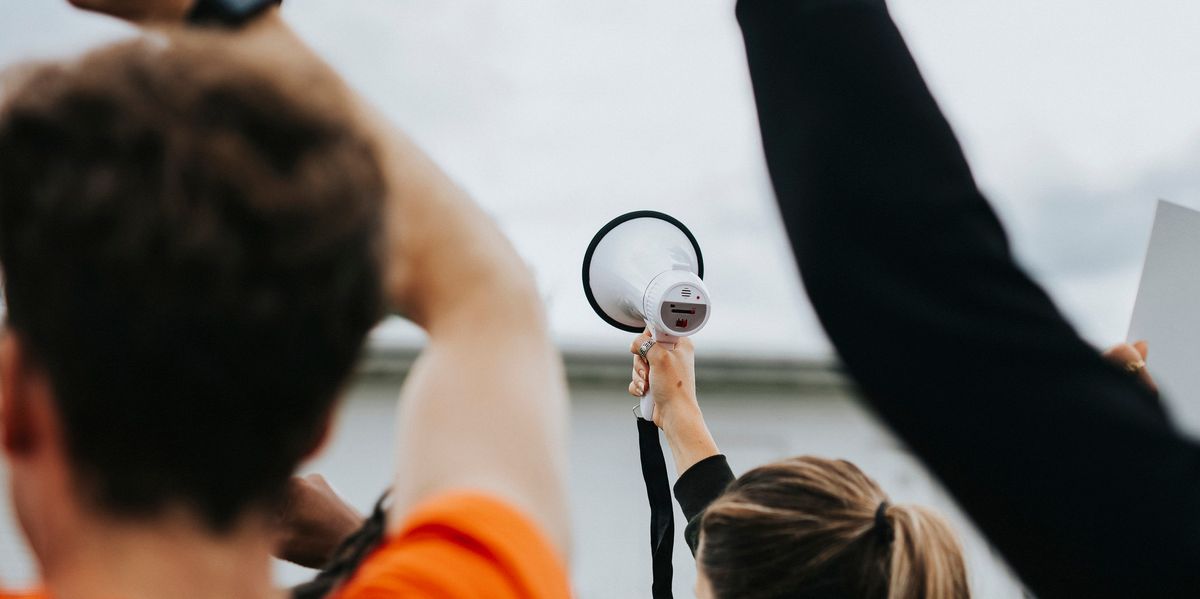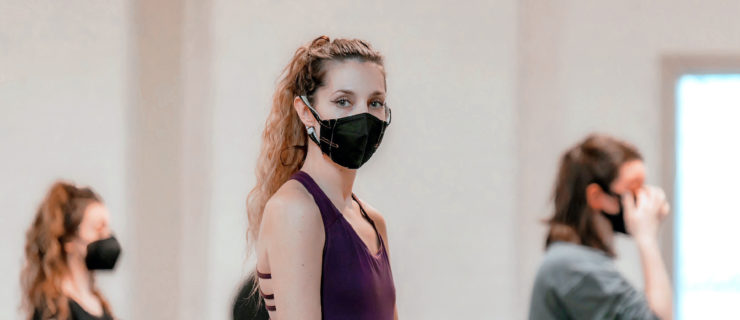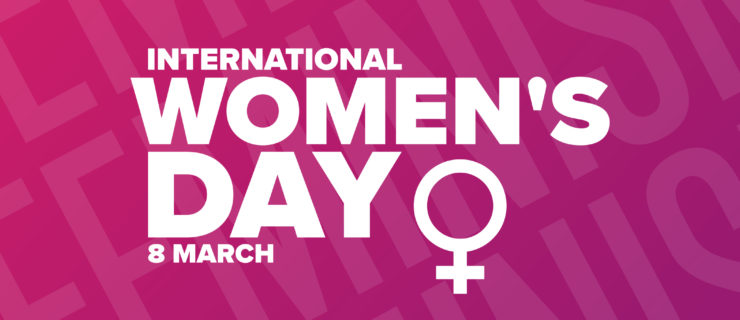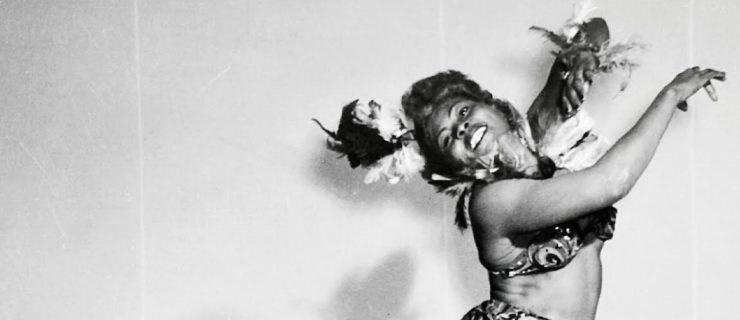9 Dancers Using Their Art to Advocate for Change
Dance and activism can go hand in hand in a number of ways. Over the past few months, many dancers have turned to their art not only to advocate in support of the Black Lives Matter movement, but to highlight injustice within the dance world itself. Whether it’s incorporating dance into protests, starting conversations with other members of the dance community, or expressing themselves through personal creative projects, dancers are finding ways to speak out.
Katie Traylor
A junior dance-science major at Texas A&M University, Traylor wasn’t expecting to get over 5,000 views on Facebook, and over 1,200 on Instagram, when she posted a video of herself improvising to the song “Glory,” by John Legend. But in the wake of growing protests over police brutality and racial injustice, her solo resonated. “I see dance as a very powerful form of art. Being able to express my feelings through dance during this time gives me the feeling of vulnerability, empowerment and the sense of being heard by my community,” Traylor says. “Being able to train and continue to learn about the art of dance as a biracial female has let me gain a voice that I didn’t know I had.”
Kennedy George and Ava Holloway

Julia Rendleman/Reuters
Kennedy George and Ava Holloway weren’t trying to go viral when they decided to have photos taken in front of the Robert E. Lee statue in Richmond, VA, after the governor ordered it to be taken down. The statue, covered in multicolored graffiti, had become the site of many impromptu photo shoots as people celebrated its impending removal, and reflected on the historic moment. The two friends, both 14, have been dancing together for 11 years at Central Virginia Dance Academy. “I wanted to bring dance into it because it’s just a part of me, and I bring it everywhere I go,” says Kennedy. “Then it got way bigger and so many people started sharing the photo, and it made me appreciate dance even more.”
Dressed in black tutus and pointe shoes while working with Richmond photographer Marcus Ingram, the girls caught the eye of other photographers as well, including photojournalist Julia Rendleman. When Rendleman posted an image of the two ballerinas, fists raised in strength, on her Instagram, it spread faster than anyone anticipated, even grabbing the attention of major news outlets.
Since the photo went viral in early June, the friends have been in the process of starting a nonprofit called Brown Ballerinas for Change, which aims to continue their activism and provide dance scholarships for underrepresented populations in ballet. Ava has also co-authored a children’s book with her mother, Amanda Lynch, called My Ancestors’ Wildest Dreams. “These pictures definitely have a deep meaning behind them, and the dance world is so supportive,” Ava says. “It’s overwhelming, but in the best way possible,” adds Kennedy. “It makes you happy to see that people are actually inspired by you and you’re making a change. It’s the best feeling in the world.”
Allison “Buttons” Bedell and Sheen Jamaal
When dancer Sheen Jamaal saw a video of protestors doing the Cupid Shuffle in New Jersey, inspiration struck to do something similar in New York. He immediately called his friend and collaborator Allison “Buttons” Bedell, and the seed for the Dance For George protest was planted. The event, on Sunday, June 7, drew around 400 people, who marched peacefully through NYC’s Harlem neighborhood, danced to the Electric Slide as a group, and closed with nine minutes of kneeling in silence together, in tribute to George Floyd.
While the tone for the day was serious, the goal was to celebrate Black culture and the contributions of Black artists to the dance and entertainment industries. The mix of songs Jamaal put together included “Electric Boogie” (the song associated with the Electric Slide) and other classic songs by Black artists. He and Bedell point out that many people, when they dance to the Electric Slide at a party, don’t even realize they’re dancing to a song by a Black woman. “For me the event stands for strength more than anything,” Jamaal says. “Finding a meaningful way to use art to effect social change—the way artists Katherine Dunham, Alvin Ailey and Martha Graham did before us—it just felt right.”
Bedell cites the meaningfulness of watching a huge crowd of all ages and backgrounds moving together. “We get so wrapped up in choreography and learning and being perfect and all these things in the dance world, and I think sometimes you’ve got to remember that our craft is so expansive—it touches other things and it can bring everyone together,” she says. Jamaal agrees. “Getting messages from people saying this protest made them feel like now they can use their voice, or it gave them the strength to power through personal situations—for me, that feeling outweighs everything,” he says, “because it just shows that we’re much stronger together than divided.”
Jo’Artis Ratti
Though krumpers often participate in dance battles, their raw, energetic freestyling offers a positive release of frustration and aggression through nonviolent movement. For the youth in the communities where it originated, the dance acted as a response to police and gang violence, and a way to cope.
Dancer Jo’Artis Ratti, who goes by “Big Mijo” and is one of the co-founders of krump, used his art as a form of silent protest at a recent demonstration in Santa Monica, CA, when he danced in front of a line of police officers, with his friend Samantha Donohue dancing beside him. While Ratti looks defiant and strong, his movement is also full of vulnerability and pain. Though the officers were clearly uncomfortable at first, and Ratti had to explain that he was moving peacefully, one of them even ended up thanking him at the end of his dance. “There aren’t a lot of masculine men who dance,” Ratti told writer Sarah L. Kaufman at The Washington Post, “and that’s what keeps me motivated to do it. To show people that you can let your guard down and be vulnerable through art.”
J. Bouey and Melanie Greene
Through their podcast, The Dance Union, Melanie Greene and J. Bouey have been confronting racism in the dance world, and highlighting the experiences of Black artists, since 2018. Their episodes cover a variety of topics and issues, ranging from mental health and sexual harassment to advocating for fair pay. In early June, in response to a piece written by artist Nana Chinara called “An Open Letter to Arts Organizations Rampant With White Supremacy,” they decided to organize an online townhall to continue the conversation and take steps toward direct action. That first meeting, “Town Hall for Collective Action: Dismantling White Supremacy Within Dance Institutions,” had nearly a thousand attendees, either live on Zoom or watching on YouTube after the event. “The Town Hall’s intention is to hold a space for our dance community to express their anger, witness the grief of our community, and synthesize that information into action,” Greene and Bouey wrote on The Dance Union‘s Instagram in a post before the event. “We see this, and future town halls, as a space to stay connected with the current organizing work and to galvanize our dance community to take action.” They’ve since hosted a second town hall, which covered topics in mental health, dance education and organizing demonstrations.
Amanda Morgan
Pacific Northwest Ballet corps member Amanda Morgan is the only Black ballerina in the company, and she’s using her platform to speak out against racial injustice. At a Seattle protest in early June, she made a passionate speech that she later shared on Instagram, saying, “I will never stop talking about race until there is no longer a reason to. Society may have tried to silence the voices of the marginalized, but you will never silence me.” She’s kept the momentum going since then, calling on leaders in the ballet community to be more vocal in addressing injustice and inequality. She’s spoken to outlets including Dance Magazine and the Seattle Times about her activism, and has continued to share thoughts and resources through social media. On Juneteenth, for instance, she shared a series of photos of Black artists and writers who have inspired her, from Josephine Baker and Arthur Mitchell to James Baldwin and Alice Walker. “Organizations need to think critically about: What are we showing as a ballet company? What are we saying, visually, and who are we leaving out? Whose story isn’t being told?” Morgan told Dance Magazine. “We need to serve not just one community, but all communities.”




